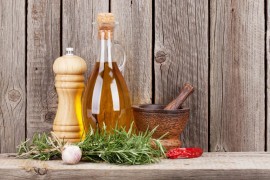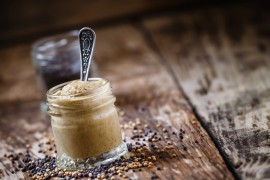The French aren't the only ones who eat frogs
It's not just us: in China, Indonesia and even the USA, frog legs are eaten, and it's even a specialty in Arkansas and Louisiana, notably in the town of Rayne, nicknamed Frog City ! Well, it was Frenchmen, the Weil brothers, who set this fashion in motion in the town in the 1880s. In any case, even if it's not the only country where frogs are eaten, France leads the way in frogs' legs consumption in Europe and even the world.
Since when do we eat frogs' legs?
Mystery! Alexandre Dumas thought it dated back to the Renaissance, and it may well have. What we do know, however, is that in the Middle Ages it was strongly discouraged. The truth may lie in the French countryside before the French Revolution. We weren't allowed to hunt birds or game, but there was nothing to stop us fetching frogs. The French genius for cooking did the rest.
Frog legs browned in butter with parsley is too good / Photo chosen by monsieurdefrance.Com: depositphotos.
How to cook frogs' legs
The easiest way is to pan-fry. To find some, head for the fishmonger's. You take 250 grams of shelled frogs' legs (otherwise it takes a long time to do) you lightly flour them. Then, in a plate you mix50 grams of soft butter with chopped garlic, and parsley. Finally, you brown the thighs in the butter with a little salt, pepper, and deglaze with a glass of white wine sec and voila!
Of course, there are plenty of other versions: with cream, fricasseed, even in "breaded chicken" mode for the more daring. And in Lorraine, in Vittel, there's even a frog pie... You mix frog legs with cream (why not with a few mushrooms too), slip them between two rounds of puff pastry and bake them quietly in a steamer. The perfect combo!
When it comes to health, don't panic: frogs' legs are rich in potassium and protein, and to top it all off, they're fat-free!
not all frogs are edible! Visit the fishmonger to be sure





